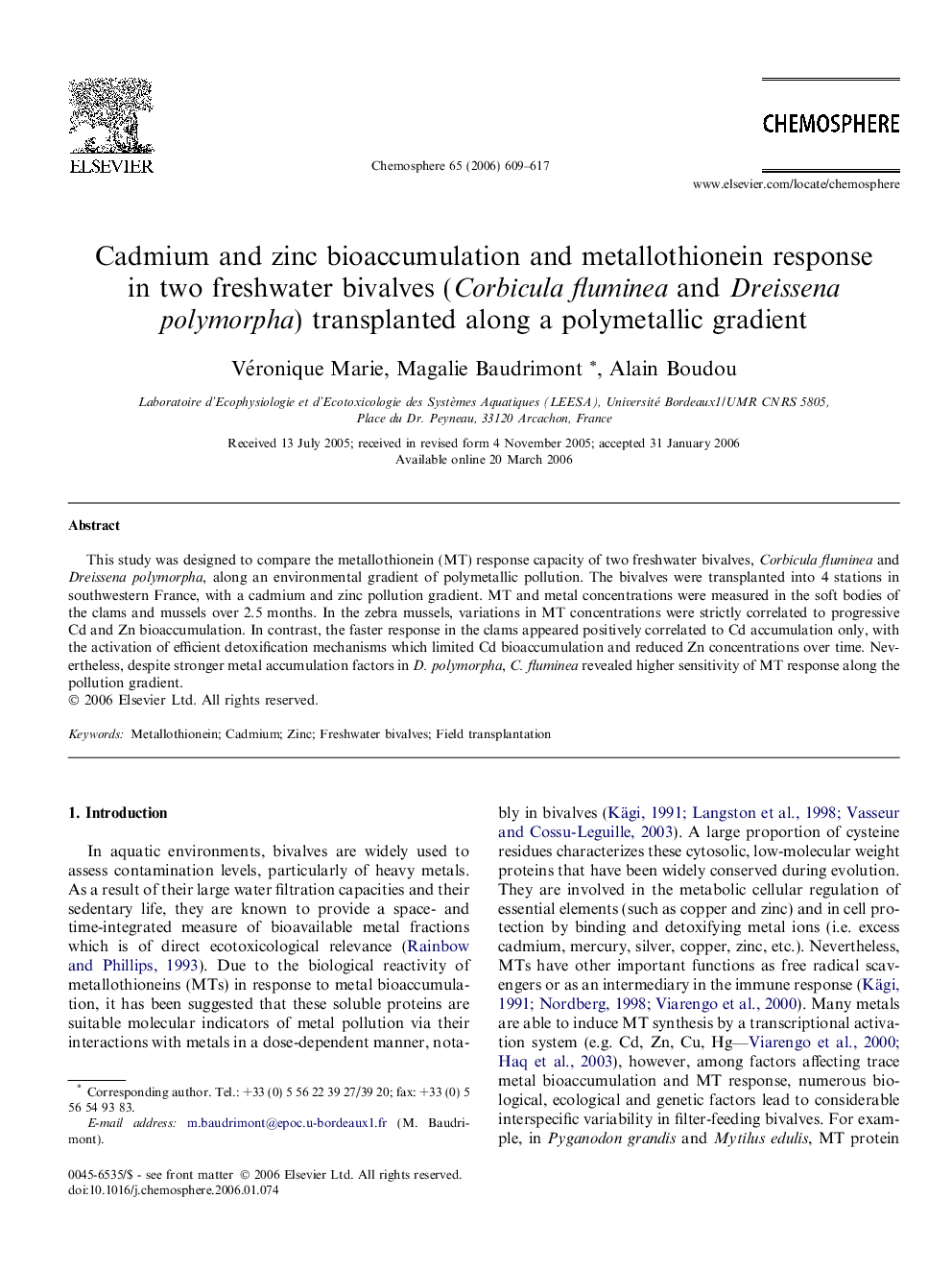| Article ID | Journal | Published Year | Pages | File Type |
|---|---|---|---|---|
| 4416692 | Chemosphere | 2006 | 9 Pages |
This study was designed to compare the metallothionein (MT) response capacity of two freshwater bivalves, Corbicula fluminea and Dreissena polymorpha, along an environmental gradient of polymetallic pollution. The bivalves were transplanted into 4 stations in southwestern France, with a cadmium and zinc pollution gradient. MT and metal concentrations were measured in the soft bodies of the clams and mussels over 2.5 months. In the zebra mussels, variations in MT concentrations were strictly correlated to progressive Cd and Zn bioaccumulation. In contrast, the faster response in the clams appeared positively correlated to Cd accumulation only, with the activation of efficient detoxification mechanisms which limited Cd bioaccumulation and reduced Zn concentrations over time. Nevertheless, despite stronger metal accumulation factors in D. polymorpha, C. fluminea revealed higher sensitivity of MT response along the pollution gradient.
